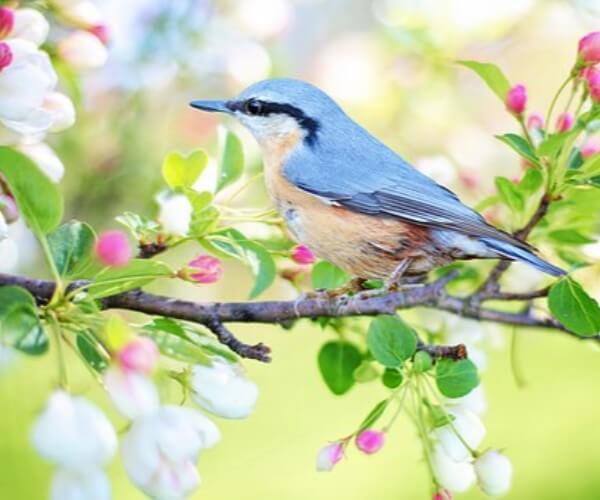- Lawn Turf
- Artificial
- Soil
- Timber
- Composite Decking
- Paving & Stone
Get In Touch With Our Experts Today!
Give us a Call! - Seed & Fertiliser
- Dressing
- Bark

March 01, 2019 Seed TipsSpring Tips
Well, we’re hoping the answer is no! We’ve had some (dare we say it) unseasonably warm temperatures and some consistent rainfall seep in which can only mean one thing – spring is right around the corner. Although it’s perhaps a little early to start undertaking your spring lawncare routine, it’s never too early to start thinking about it and planning ahead. Spring is a really good time to get your garden looking great ahead of the warmer summer months so that you can kick back with a beer and enjoy the fruits of your labour, rather than wishing you had done more. So, what should you be thinking about in terms of lawncare?
Feed, Water and Fertilise
How often should I water my lawn? It’s a bit like asking how long is a piece of string – it will vary depending on the conditions your lawn is in. It’s best to keep a sharp eye on it and water as and when you deem it necessary. Spring weather usually means fairly frequent rain showers so you will have Mother Nature on your side, but it’s important to make sure that you’re not solely relying upon the rain to keep your lawn hydrated. Make sure you’ve got the equipment and time put aside to top up if necessary. Feeding your lawn will help to strengthen it and improve the overall health, whilst also helping to prevent weeds and moss from being able to establish and thrive. It’s best to try and apply fertiliser either when the ground is damp or if some rainfall is expected. Feeding your grass with a nitrogen-based fertiliser will make the grass greener and more aesthetically pleasing and helps to promote thicker growth and increased strength. Having a strong, healthy lawn means that it will be better equipped to deal with any weather-related stresses and the arrival of moss or weeds. When using a fertiliser, one of the most important things to do is ensure that you are spreading it evenly in order to maintain a uniform colour.
Get the lawnmower out
Tedious as it may sound, one of the most important parts of your springtime lawn care routine should be a good mowing schedule. Your lawn will appreciate being kept fairly tall in order to keep a thermal protection layer against the chilly spring nights. A key tip is to never reduce your lawn height by more than 25% at any one time. You should be trying to keep your grass at the same height throughout spring, meaning that you’re probably looking at having to mow on a weekly/ fortnightly basis in order to achieve this. However, as previously mentioned, you need to keep a sharp eye on the height to which you are trimming – and make sure that this is not too low. Not only will the length help to protect your lawn against the colder nights, but the shorter the grass, the weaker it is; keeping it a little longer will help the grass with establishing strong roots and warding off weeds/ moss. If you have managed to lay new turf recently, don’t worry about collecting the grass clippings as they are rich and plentiful in the nutrients that your new lawn will crave.
The problem of weeds (and moss)
Weeds and moss can be very unwelcome additions to your lawn but don’t panic – it’s not the end of the world and there are things that can be done so that these pesky things don’t ruin the hard work you have put in so far. There are simple solutions for the problem of moss or weeds individually, as well as if they decide to attack together. If it’s weeds that are plaguing your lawn then your best bet is to use a liquid lawn weed killer. When used correctly, this will cause no damage to your lawn and will kill most, if not all, weeds. If you are facing the problem of moss on its own, there are lawn moss killers available that also contain a feed that will brighten up the green of your lawn – win, win! If your lawn is being hit by both at once, you should be using a granular lawn product that contains feeding, weed control and moss control ingredients. One thing to bear in mind is that most of these products are usually hormone acting, meaning they will achieve their best results in slightly warmer weather so it’s best to wait to use them until the nights become slightly warmer and more consistent.
We’ll look a little closer at some of these as we move further into spring but it’s a good idea to start thinking about which of these you will need to be implementing and how you will go about adding these into your maintenance routine. Putting some work into your garden over the spring months means that you should be able to reap the benefits as the weather warms up.